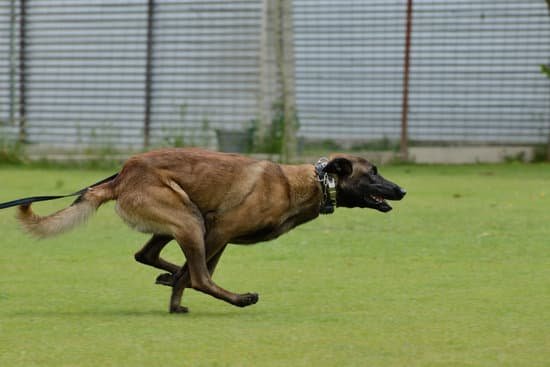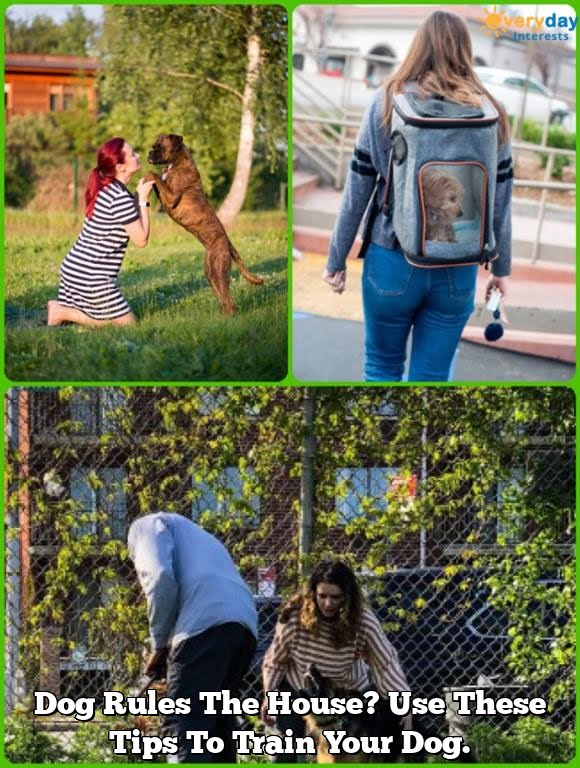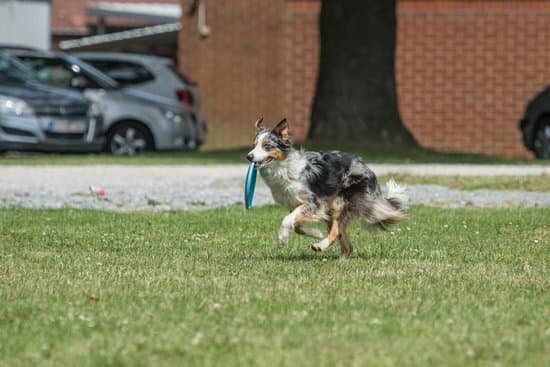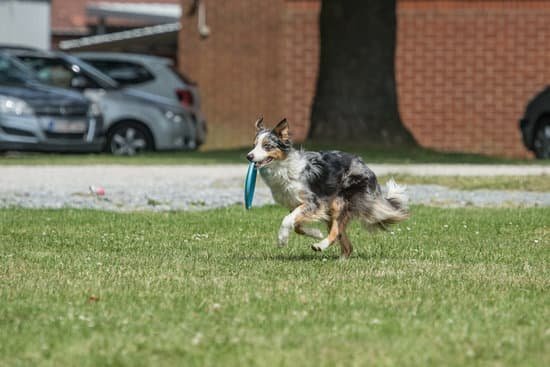Training a dog to be tied up is an essential aspect of responsible pet ownership. Whether it’s for the safety of your dog or the convenience of managing their behavior in public spaces, understanding the importance of this training is crucial. In this article, we will delve into the reasons why training a dog to be tied up is necessary and discuss the benefits of teaching a dog to handle being tied up.
Firstly, it’s important to assess your dog’s suitability for being tied up. Not all dogs have the temperament or behavior traits that make them suitable for being tethered. We will explore the characteristics of a dog that can handle being tied up and provide guidance on evaluating your dog’s temperament to determine if it is suitable for training.
Selecting the right equipment for tying up your dog is also crucial. Different types of leashes, harnesses, and ties are available, and using the appropriate equipment for training is vital for your dog’s safety and comfort. Additionally, we will introduce basic obedience training as a foundation for teaching your dog fundamental commands such as sit, stay, and come while establishing trust and respect between you and your pet.
Assessing Your Dog’s Suitability for Being Tied Up
Before embarking on training your dog to be tied up, it is crucial to assess whether your canine companion is suitable for this type of training. Not all dogs are suited to being tethered, and it is important to consider their temperament and behavior before beginning the training process.
One key characteristic to look out for is the dog’s ability to remain calm and composed when restrained. Dogs that are easily agitated or anxious may not be suitable candidates for being tied up.
Another important aspect to consider when assessing your dog’s suitability for being tied up is their level of obedience and responsiveness to commands. Training a dog to be tied up requires a certain level of obedience and trust between you and your pet. If your dog struggles with basic obedience commands such as sit, stay, and come, it may indicate that they are not ready for this type of training.
Additionally, it is essential to evaluate your dog’s overall behavior in various situations. Take note of how they interact with other animals and people, as well as their general response to new environments or stimuli. A dog that demonstrates fear or aggression in unfamiliar situations may not be suited for being tied up. It is important to prioritize the safety and well-being of your dog when considering whether they are suitable for this type of training.
Selecting the Right Equipment for Tying Up Your Dog
When it comes to training a dog to be tied up, selecting the right equipment is crucial for the safety and comfort of your pet. There are various types of leashes, harnesses, and ties available in the market, each serving a different purpose. It’s important to choose the appropriate equipment that suits your dog’s size, breed, and behavior. Here are some guidelines for selecting the right equipment for tying up your dog:
– **Leashes**: There are different types of leashes such as nylon leashes, leather leashes, retractable leashes, and chain leashes. Nylon leashes are lightweight and durable, making them suitable for most dogs. Leather leashes are strong and provide a classic look while being comfortable to hold. Retractable leashes offer flexibility in length but should be used with caution as they can pose risks if not handled properly. Chain leashes are sturdy and suitable for strong or large breeds.
– **Harnesses**: Choosing the right harness is essential for controlling your dog when tied up. There are standard harnesses that go around the chest and back of the dog which provide more control over their movements. Front-clip harnesses discourage pulling while back-clip harnesses give more freedom of movement.
– **Ties**: Tying up your dog may require anchors or tie-out stakes that secure them in place. It’s important to select high-quality tie-outs that won’t easily break or snap under pressure. Some tie-outs also come with swivel attachments to prevent tangling.
Selecting the right equipment is also about considering your dog’s comfort and safety during training sessions. Always ensure that the equipment fits properly without causing any discomfort or restriction in movement for your pet. Taking these considerations into account will help make the process of training your dog to be tied up safer and more effective.
Introduction to Basic Obedience Training
Basic obedience training is an essential foundation for any dog, regardless of whether or not they will be tied up. Teaching your dog fundamental commands such as sit, stay, and come not only enables you to communicate effectively with your pet but also creates a bond of trust and respect between you and your furry companion.
This section will explore the importance of basic obedience training in preparing your dog to be tied up and provide guidance on how to effectively train them.
Before embarking on the specific training for being tied up, it is crucial to ensure that your dog has a good grasp of basic obedience commands. This serves as the building blocks for further training and helps establish a relationship based on trust and respect. By consistently practicing these commands with positive reinforcement, you are setting the stage for successful training in more advanced skills, including desensitization to being tied up.
When teaching basic obedience commands, consistency is key. Use clear cues and gestures while training your dog, rewarding them with praise or treats when they successfully execute a command. Repetition and positive reinforcement will help your pet understand what is expected of them, setting the groundwork for a smooth transition into more advanced training techniques. With patience and encouragement, you can lay a solid foundation for your dog’s overall behavior and responsiveness to future instructions.
Desensitizing Your Dog to Being Tied Up
- Start indoors: Begin by attaching a lightweight leash or harness to your dog while inside your home. Allow your dog to move freely while getting used to the feeling of being tethered. Use treats, praise, and toys to make the experience enjoyable for your dog.
- Gradual exposure: Once your dog is comfortable being tied up indoors, gradually introduce them to being tethered in different areas of your home, such as the backyard or living room. Continue using positive reinforcement to associate being tied up with positive experiences.
- Outdoor exposure: When your dog is at ease with being tethered inside, start introducing them to the outdoors while still using positive reinforcement techniques. This can help prepare your dog for being tied up in different environments such as parks or outdoor events.
Remember that desensitization takes time and patience, so be sure to progress at a pace that is comfortable for your dog. It’s essential that you pay attention to your dog’s body language and behavior during this process, and adjust accordingly if they show signs of discomfort or distress. Overall, desensitizing your dog to being tied up will help build their confidence and ensure a positive experience when it comes time for actual tying up scenarios.
Implementing Training Techniques
Step-by-Step Methods
When it comes to training your dog to be tied up, it’s essential to follow a systematic approach. Start by familiarizing your dog with the equipment you will be using, such as leashes and harnesses. Allow your dog to sniff and investigate the gear so that they become comfortable with it.
Next, begin by attaching the leash or tie in a controlled environment, such as your backyard, and allow your dog to roam within a limited space. Use positive reinforcement, such as treats and praise, to create a positive association with being tied up.
As your dog becomes more accustomed to being tethered, gradually increase the duration of being tied up. Start with short intervals and slowly build up to longer periods. Throughout this process, it’s crucial to remain patient and calm, providing reassurance to your dog and addressing any signs of distress with care.
Tips for Handling Resistance
It’s common for dogs to exhibit resistance or fear when first being tied up. If your dog shows signs of anxiety or attempts to pull away from the tie, avoid forcing them into the situation. Instead, employ gentle but firm encouragement and redirect their focus with treats or toys. Consistency is key in reinforcing positive behavior – if your dog learns that remaining calm results in rewards, they will be more likely to cooperate during future training sessions.
Additionally, consider seeking professional guidance from a certified dog trainer if you encounter persistent challenges in getting your dog accustomed to being tied up. A professional can provide tailored advice based on your dog’s unique temperament and behavioral traits.
Building Trust and Confidence
Training your dog to be tied up is not only about teaching obedience but also about building trust and confidence in the relationship between you and your pet. Ensure that you maintain a calm demeanor during training sessions and provide ample opportunities for positive interactions with your dog while they are tethered.
This will help instill a sense of security in them and reinforce their trust in you as their owner. By implementing these techniques consistently and patiently, you can help your dog become comfortable with being tied up while strengthening the bond between you both.
Troubleshooting Common Challenges
Training a dog to be tied up can present various challenges, and it is crucial for owners to be prepared for these potential obstacles. One common challenge that many dog owners face is anxiety or fear in their pets when being tied up.
This can manifest in behaviors such as whining, barking, pacing, or attempting to escape from the tether. It is important to address this issue by gradually desensitizing the dog to being tied up and using positive reinforcement to create a positive association with the experience.
Another common challenge during the training process is aggression, particularly when it comes to resource guarding. Some dogs may become protective of their space or belongings when they are tied up, leading to growling, snapping, or other aggressive behaviors. In such cases, it is essential to work on trust-building exercises with the dog and address any underlying issues of insecurity or possessiveness.
Resistance from the dog can also be a significant challenge during training. Some dogs may simply refuse to comply with being tied up and may exhibit stubborn behavior during the process. In these situations, patience and consistency are key. Using gentle but firm guidance along with rewards for compliance can help overcome resistance and encourage the dog to accept being tied up.
Understanding these common challenges and proactively addressing them is essential for successful training. With patience, dedication, and a deep understanding of your dog’s individual needs and behaviors, you can effectively troubleshoot any issues that arise during the process of training your dog to be tied up.
Gradually Incorporating Tying Up in Different Environments
Training a dog to be tied up is an essential skill that can ensure the safety and well-being of your pet in various situations. Whether you need to secure your dog while you run errands, go on a hike, or simply want them to behave in public spaces, teaching your dog to handle being tied up is crucial. Additionally, it can also prevent your dog from running off, getting into dangerous situations, or causing harm to itself or others.
Assessing Your Dog’s Suitability for Being Tied Up
Not all dogs are suited for being tied up, as some may become anxious, aggressive, or fearful when restrained. It’s important to evaluate your dog’s temperament and behavior before embarking on training. Look for signs of calmness and obedience as these are indications that your dog may be suitable for this training. It’s also crucial to consider the breed and size of your dog as some breeds may not respond well to being tied up.
Selecting the Right Equipment for Tying Up Your Dog
When training your dog to be tied up, it’s vital to use the appropriate equipment such as leashes, harnesses, and ties. The type of equipment you choose should be based on your dog’s size, strength, and comfort level. For example, smaller dogs may require a lighter leash or harness compared to larger breeds. Using the right equipment can make the training process smoother and help keep your dog safe and comfortable while being tied up.
| Section Topic | Data |
|---|---|
| Importance of Training | Explains why training a dog to be tied up is necessary |
| Dog Suitability Assessment | Emphasizes evaluating the temperament and behavior of a dog before training |
| Selecting Equipment | Discusses importance of using appropriate leashes and harnesses for training |
Ensuring Safety and Welfare
In conclusion, training a dog to be tied up is an important process that requires patience, consistency, and a thoughtful approach. By understanding the importance of this training and assessing your dog’s suitability for being tied up, you can set the stage for a successful training journey. Selecting the right equipment, introducing basic obedience training, and desensitizing your dog to being tied up are crucial steps in this process.
Furthermore, implementing appropriate training techniques and addressing common challenges will help ensure that the training is effective and beneficial for both you and your dog. It’s important to gradually incorporate tying up in different environments and prioritize your dog’s safety and welfare throughout the entire training process. This involves monitoring your dog while tied up and recognizing any signs of discomfort or distress.
Ultimately, by following these steps and prioritizing safety, you can train your dog to be tied up in a manner that is positive and allows for a trusting relationship between you and your canine companion. Remember to be patient, consistent, and always prioritize your dog’s well-being as you embark on this training journey. With dedication and the right approach, you can successfully train your dog to handle being tied up with confidence and ease.
Frequently Asked Questions
How Do I Teach My Dog to Be Tied Up?
Teaching a dog to be tied up requires patience, positive reinforcement, and consistency. Start by introducing your dog to the concept of being tethered in a safe and secure area, using a leash or long line.
Gradually increase the duration of being tied up while providing treats and praise to create a positive association. It’s important to never leave your dog unattended while tied up and always ensure their safety and comfort.
How Do You Teach a Dog to Be Tethered?
When teaching a dog to be tethered, it’s essential to approach it with patience and positive reinforcement. Begin by familiarizing your dog with the tethering equipment in a calm and controlled environment.
Use treats and praise to encourage them to stay near the designated area. Gradually increase the duration of being tethered while ensuring your dog’s comfort and well-being at all times.
Is It OK for a Dog to Be Tied Up?
Tying up a dog should only be done when necessary for their safety or supervision, rather than as a long-term solution. It is not recommended for dogs to be tied up for extended periods as it can lead to anxiety, boredom, aggression, or injury.
If tying up is unavoidable, make sure it is done safely, using appropriate equipment and under supervision. Dogs also need follow noopener”>plenty of exercise, mental stimulation, and social interaction which may not be met if they are consistently tied up.

Welcome to the blog! I am a professional dog trainer and have been working with dogs for many years. In this blog, I will be discussing various topics related to dog training, including tips, tricks, and advice. I hope you find this information helpful and informative. Thanks for reading!





